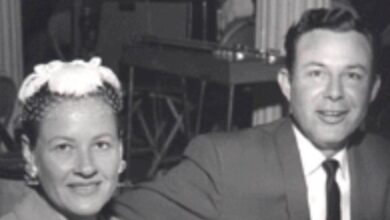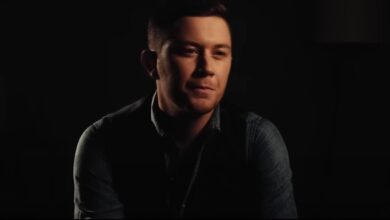This Elvis Song Has Been A Romantic Melody For 50 Years That Surpasses Today’s Music
“Can’t Help Falling in Love” is a quintessential love song, with its origins deeply rooted in the early 1960s era of music. Written by Hugo Peretti, Luigi Creatore, and George David Weiss, the song was first introduced to the world by Elvis Presley in 1961. It was featured in Presley’s film *Blue Hawaii*, and its simple yet evocative melody quickly became an iconic piece of music. The song’s soft, waltz-like rhythm and Presley’s tender vocal delivery combine to create a memorable and emotional listening experience.
The lyrical content of “Can’t Help Falling in Love” captures the essence of falling deeply in love, conveying both the joy and the vulnerability associated with such an experience. The song speaks to the inevitability of love, suggesting that despite any reservations or fears, one cannot resist the powerful pull of romantic feelings. This theme resonates universally, which has contributed to the song’s lasting appeal across various audiences and cultures.
The song’s arrangement is marked by its gentle, flowing melody and understated instrumental backing, which allows Presley’s voice to take center stage. His performance is both heartfelt and restrained, adding to the song’s charm and emotional impact. The simplicity of the arrangement, combined with the depth of the lyrics, makes “Can’t Help Falling in Love” a timeless piece that has been embraced by multiple generations.
Over the years, the song has been covered by a diverse range of artists, each bringing their own style to the classic. In 1993, British reggae band UB40 released their version, which reimagined the song with a laid-back reggae beat. This cover not only revitalized interest in the song but also introduced it to a new audience, showcasing its versatility across different musical genres. UB40’s rendition achieved significant commercial success and became a staple on various music charts.
Other notable covers include those by Italian tenor Andrea Bocelli, who added a classical touch to the song, and American singer Haley Reinhart, who brought a contemporary, jazzy flair to her version. Ingrid Michaelson also offered a unique take on the song, infusing it with a modern, indie-pop sensibility. These interpretations highlight the song’s adaptability and the wide range of emotions it can evoke, depending on the artist’s approach.
Despite the numerous renditions, the original version by Elvis Presley remains the definitive classic, embodying the spirit and simplicity of the early 1960s music scene. Presley’s ability to convey deep emotion through his voice and the song’s elegant composition ensure its place as a beloved standard. The song’s enduring popularity is a testament to its universal appeal and the powerful connection it creates with listeners.
“Can’t Help Falling in Love” has found its way into countless weddings, anniversaries, and other significant moments, serving as a musical backdrop to personal milestones and celebrations. Its continued relevance and widespread admiration speak to the profound impact of well-crafted music on our lives. The song’s legacy is a shining example of how music can transcend time and cultural boundaries, uniting people through shared experiences and emotions.





